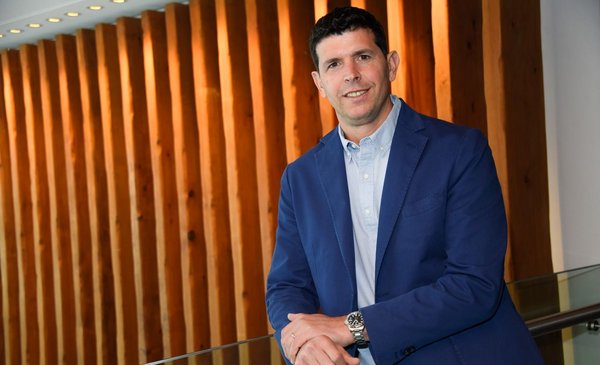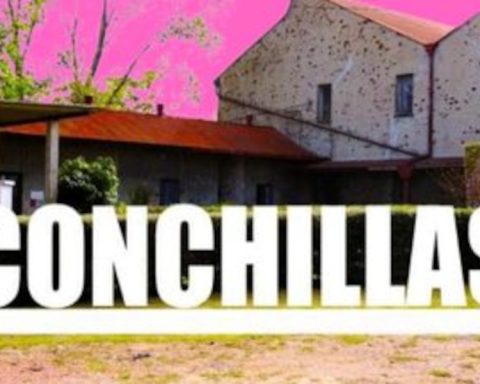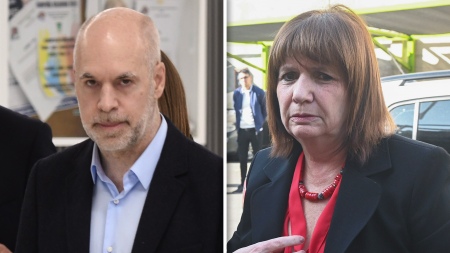Ernesto Ortiz made a career at General Motors, the company representing Chevrolet in Uruguay.
He started working in the group more than 25 years agoand after having gathered experience from each of the positions he held in different countries —both in finance and in marketing and sales— He went on to serve as Vice President for South America in 2018.
On his last visit to Uruguay, Ortiz spoke with Coffee & Business about the objective of the company as well as the strategies carried out to achieve it: “Our vision is zero, zero, zero: zero accidents, zero congestion and zero emissions,” said the company’s vice president for South America in the interview.
By the way, he explained that This objective motivates the company to position itself as a leader in different categories: security, autonomy and electrification.
Below is a summary of Ernesto Ortiz’s interview with Coffee & Business.
How do you see the automotive market in South America? And in Uruguay?
The total market of South America is at 3.6 million units sold; very similar to 2021.
The Uruguayan market is going to close the year with 54,000 units sold, which marks a growth —compared to last year— of 5%: it is growing more than the other South American countries, which have not grown year on year. And our projection is that the market grows 3% more.
Uruguay is going back to what it was in 2016-2017, with more than 50,000 units sold.
What differentiates Uruguay from other countries?
Stability. It is a country in which the rules of the game are very clear.
This impacts the financing we offer, for example credits. Interest rates and inflation, being lower than in other countries, have meant that the impact is not as strong in the Uruguayan market as it is in others.
There are also new products at the regional level that are being highly demanded by the Uruguayan consumer.
Several brands were affected by the delays that resulted from the pandemic, how did this impact the company’s performance in South America?
The semiconductor crisis has been worldwide. To minimize the impact, we have worked together with the engineering department, as well as the purchasing and logistics departments.
And how did those problems evolve up to today?
Fortunately we have very good availability in Uruguay, and also in South America. Our inventory levels, as well as our network of distributors, are growing at very adequate parameters so as not to have delivery problems.
There is going to continue to be some volatility, but demand and supply have aligned for most commodities. We still have three products where the demand is slightly higher than the supply, but we are correcting that by the end of this year.
For next year we do not see major problems due to semiconductor issues for General Motors.
Regarding the demand, what is the most demanded car in Uruguay?
The company’s most demanded cars are the Chevrolet Onix, and Chevrolet el Joy.
In addition, very soon we are going to launch the new Montana, which will be in the top 10 of the most demanded vehicles because it is very competitive: with the versatility of the pickup box, and with more than 90 accessories. It will be very suitable for this Uruguayan client.
Apart from the new Montana, we are going to have five more launches next year in Uruguay. We will continue to complement the portfolio to be very robust in all segments.
After losing the leadership position in the Uruguayan market, Chevrolet regained it this year, why?
There are several factors that have contributed to recovering this leadership in sales; and they all relate.
As a first point, I would highlight the presence of General Motors, as a brand, in Uruguay. This makes an important difference in the relationship both with our distributors and with our Uruguayan clients. Being close, living and breathing everything that happens sets you apart.
The second point is the renewal of our product portfolio, for example: the new Onix, the new Joy, the new Tracker and the relaunch of the S10. Also the launch of special versions like the RS version that we are going to launch with the Tracker.
As a third point, I am convinced —and we have been working on this for five years— in working to exceed customer expectations.
The experience of our consumers has to be excellent and for that we have specific programs, for example, to offer spare parts immediately to customers.
As a fourth point is the development of the entire digital part because suddenly the consumer does not want to go to the dealership three times to buy a car, he wants to go once only to sign. So, we have focused on everything that is digital, so that the consumer can buy the car without leaving the house. Let him decide if he wants to make a purchase 100% online, 50% online or in person. Everything that is training in this sense has been a strategic pillar to train all the personnel of our distributors.
He was talking about the new models that they are going to launch or relaunch on the market but, in addition to this, General Motors is committed to electric cars. What led you to invest in this?
Our vision is zero, zero, zero: zero accidents, zero congestion and zero emissions.
General Motors set out to be a leader in zero emissions, so for a few years we have been working to contribute towards a much greener world.
That vision motivates us to be leaders in electrification, and we are investing more than US$35,000.
With this investment we will have between 20 and 30 electrical products, from those that we have already launched to those that will form part of the portfolio in 2025.
At the portfolio level we are bringing the new Bolt EUV to South America. We have already launched it in Colombia, and soon we will have it in other countries in the region. Right away we’re going to launch the Blazer EV and the Equinox EV.
For Uruguay they will arrive in the next year, year and a half.
For zero accidents and zero congestion, we are also investing in the development —and commercialization— of autonomous cars. We are the only company to have a government license in San Francisco, where we are already marketing self-driving cars.
Is Uruguay ready to receive electric cars?
Several condiments are needed for the incorporation of electric in a country, for example, promotion by the public-private sector, and Uruguay is one of the most advanced countries in legislation and in promoting this technology.
In addition, at the charger level there are already more than 120 charging stations and this is going to grow because more and more companies are going to be interested in expanding that charging network, such as General Motors with its dealers and with different relationships with other companies.
It has also been proven that 80% of electric car consumers charge at home, and for this we are implementing a strategy that the electric Chevrolet already has a built-in charger to make it easier for that consumer to charge at home with a normal charger. or fast.
Another very important factor is autonomy, and the new electric Chevrolets will have autonomy of more than 450 km, up to 550 km. The average is 35 kilometers per day, so with 450 km or 550 km of autonomy you have to not worry about for approximately 15 days.
These factors are going to make the adoption of the electric car exponential.
As for the self-employed, do you think they will expand to the South American markets?
Yes, although it will depend on factors such as the infrastructure of each country, the promotion of technology by the public-private sector and the adoption of the society.
General Motors is the first company to have this business license in San Francisco, and we are already extending it to different cities in the United States and Canada.
Surely in some medium term it will expand to the different countries of the world, including Uruguay.
First everything that is electrification will arrive, and later everything that is autonomy.


















